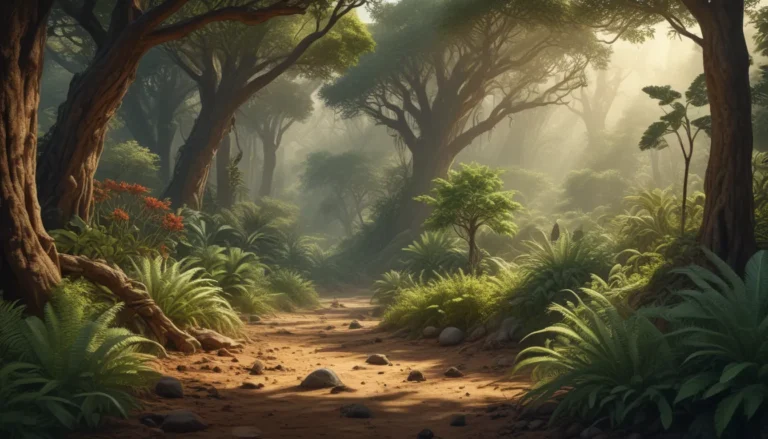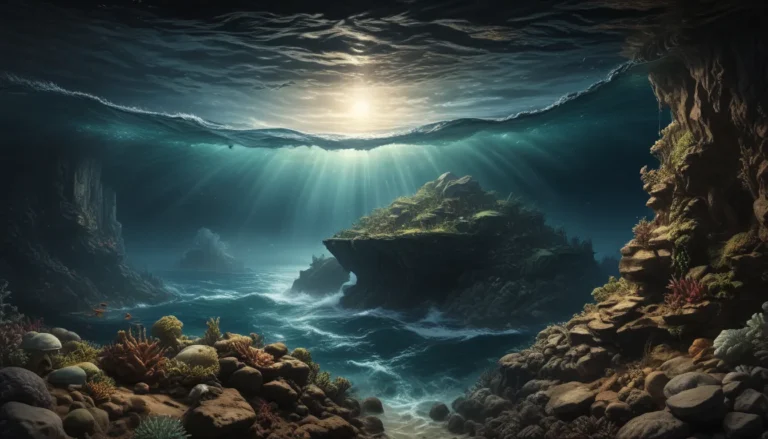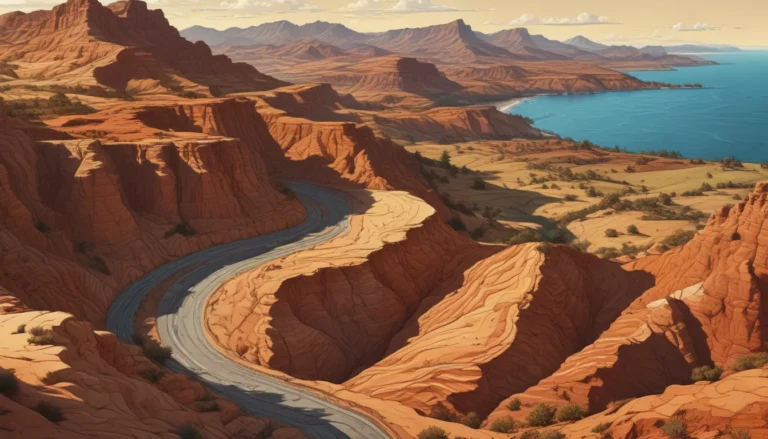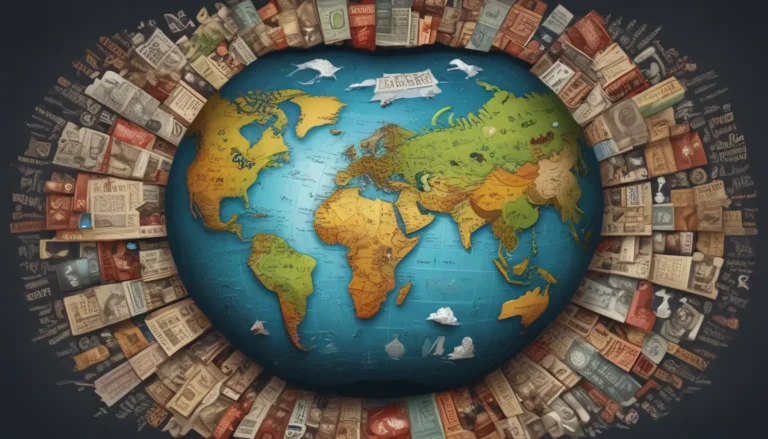A Note About Images: The images used in our articles are for illustration purposes only and may not exactly match the content. They are meant to engage readers, but the text should be relied upon for accurate information.
Conservation efforts are a cornerstone in safeguarding our planet’s biodiversity and natural resources. From the protection of endangered species to the promotion of sustainable practices, individuals, organizations, and governments worldwide are actively involved in conservation endeavors. While the importance of these efforts is widely recognized, there are numerous astounding facts that often go unnoticed. In this article, we will delve into 16 remarkable facts about conservation efforts that shed light on the dedication and innovation driving this global movement. Prepare to be inspired and amazed by the incredible world of conservation!
Embracing Conservation: Key Takeaways
- Conservation efforts play a vital role in safeguarding the Earth’s land, oceans, and wildlife. Initiatives like protecting the Great Barrier Reef and promoting renewable energy are crucial for ensuring a sustainable future for all.
- Collaboration and innovation are the driving forces behind successful conservation efforts. By working together to protect endangered species and implement sustainable practices, we can make a positive impact on the planet for generations to come.
16 Astounding Facts About Conservation Efforts
Conservation efforts are essential for preserving our natural resources and protecting the environment. Below are 16 astounding facts that highlight the significance of ongoing conservation endeavors:
-
Over 15% of the Earth’s land surface is currently protected under conservation efforts, ranging from national parks to wildlife refuges. These protected areas play a key role in safeguarding biodiversity and promoting sustainable land use.
-
The Great Barrier Reef, located off the coast of Australia, is the world’s largest coral reef ecosystem and a significant conservation area. Efforts to preserve the reef are essential for maintaining its ecological balance and protecting it from climate change and human activities.
-
Conservation efforts have led to the recovery of several endangered species, including the bald eagle, gray wolf, and humpback whale. Through habitat conservation and international cooperation, these species have made remarkable comebacks.
-
The Amazon rainforest, known as the “lungs of the Earth,” is home to unparalleled biodiversity. Protecting the Amazon is crucial for the preservation of global biodiversity, as it houses approximately 10% of the world’s known species.
-
Water conservation is a pressing global issue, with billions of gallons of water wasted annually. Conservation efforts such as water-efficient technologies and responsible water consumption are crucial for sustainable water management.
-
The reintroduction of apex predators, such as wolves and big cats, into their natural habitats helps maintain ecological balance and promote healthy ecosystems. These efforts control prey populations and prevent habitat degradation.
-
Sustainable agriculture practices like organic farming and agroforestry protect soil health and biodiversity. By minimizing the use of chemical fertilizers and pesticides, these methods promote a balanced approach to food production.
-
Marine protected areas play a vital role in conserving coral reefs, seagrass meadows, and other critical marine habitats. They contribute to sustainable fisheries management and the preservation of marine biodiversity.
-
Renewable energy sources, such as solar and wind power, are crucial for conserving fossil fuels and reducing greenhouse gas emissions. Transitioning to clean energy is essential for mitigating climate change and ensuring a sustainable future.
-
Public awareness and education are key to promoting environmental responsibility. By advancing environmental education in schools and communities, individuals can actively participate in conservation initiatives.
-
Technological advancements like satellite imagery and drones aid in monitoring conservation efforts. These innovations help track deforestation, monitor wildlife populations, and identify areas requiring immediate conservation action.
-
Conservation organizations and non-profit groups play a vital role in funding and implementing conservation projects worldwide. From habitat restoration to wildlife conservation, these organizations make significant contributions to environmental conservation.
-
The Convention on International Trade in Endangered Species of Wild Fauna and Flora (CITES) regulates illegal wildlife trade to protect endangered species. This international agreement ensures the survival of wildlife in the wild.
-
Urban conservation efforts focus on creating green spaces within cities, providing habitats for wildlife, mitigating air pollution, and promoting a healthier living environment for residents.
-
Indigenous communities have long been stewards of conservation efforts, with traditional knowledge contributing to the preservation of natural resources and ecological balance.
-
Collaboration and international cooperation are essential for effective conservation efforts. Global initiatives like the United Nations Sustainable Development Goals and the Paris Agreement bring nations together to address environmental challenges and work towards a sustainable future.
Conclusion: Preserving Our Planet Together
In conclusion, conservation efforts play a critical role in protecting our environment and preserving our natural world. The 16 astounding facts highlighted in this article showcase the progress and achievements in conservation endeavors. While significant strides have been made, there is still much work to be done. By raising awareness, supporting conservation organizations, and making sustainable choices, we can all contribute to the ongoing efforts to conserve and protect our planet for future generations.
FAQs: Your Conservation Questions Answered
- Why are conservation efforts important? Conservation efforts are crucial for preserving the environment, ecosystems, and biodiversity, ensuring sustainable management of natural resources for future generations.
- What are some examples of conservation efforts? Examples include establishing protected areas, implementing sustainable farming practices, reducing waste and pollution, promoting renewable energy, and raising awareness about environmental issues.
- How can individuals contribute to conservation efforts? Individuals can make sustainable choices in daily life, support local businesses, practice responsible tourism, and participate in community clean-up initiatives.
- What is the role of conservation organizations? Conservation organizations conduct research, implement strategies, raise awareness, and collaborate with governments and communities to protect and restore ecosystems and wildlife habitats.
- How successful have conservation efforts been? Successes include species recovery, expanded protected areas, and sustainable practices in various industries. Ongoing efforts are needed to address emerging environmental challenges.
- How can I support conservation efforts? Support conservation organizations through donations, volunteer work, education, and advocacy for sustainable policies at local and national levels.
Explore the World of Conservation Efforts
While the facts mentioned in this article are astounding, the world of conservation efforts is vast and diverse. From environmental initiatives in Maricopa, Arizona, to the unique ecosystem of Kangaroo Island, there is so much more to discover. Each topic offers a fascinating insight into how humans are working to protect and preserve our planet’s natural wonders. Continue your journey of exploration and uncover the compelling stories behind these remarkable conservation endeavors!
Trustworthy Information for Curious Minds
Our commitment to delivering engaging and trustworthy content is unwavering. Each fact shared on our site comes from real users like you, bringing a wealth of diverse insights and information. Our dedicated editors rigorously review each submission to ensure the highest standards of accuracy and reliability. Explore and learn with us, knowing that the facts presented are not only fascinating but also credible. Trust in our dedication to quality and authenticity as you delve into the world of conservation efforts.






